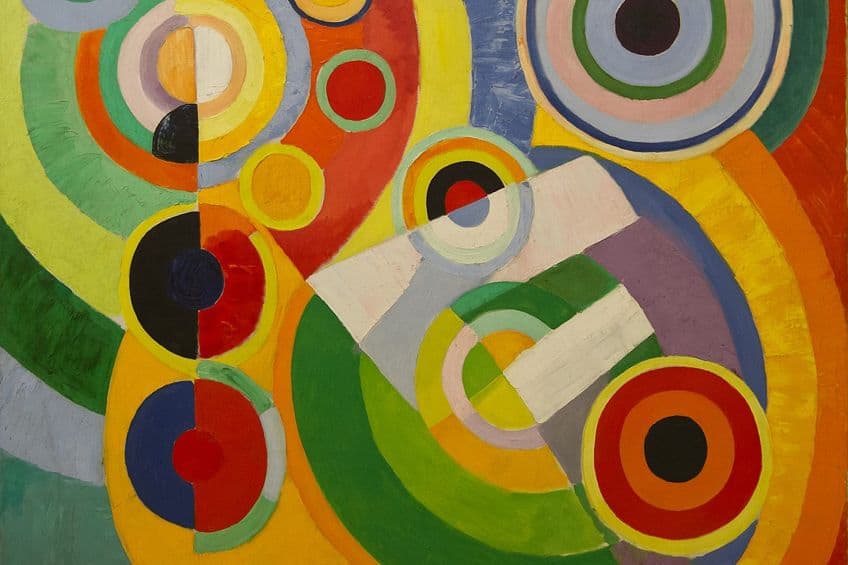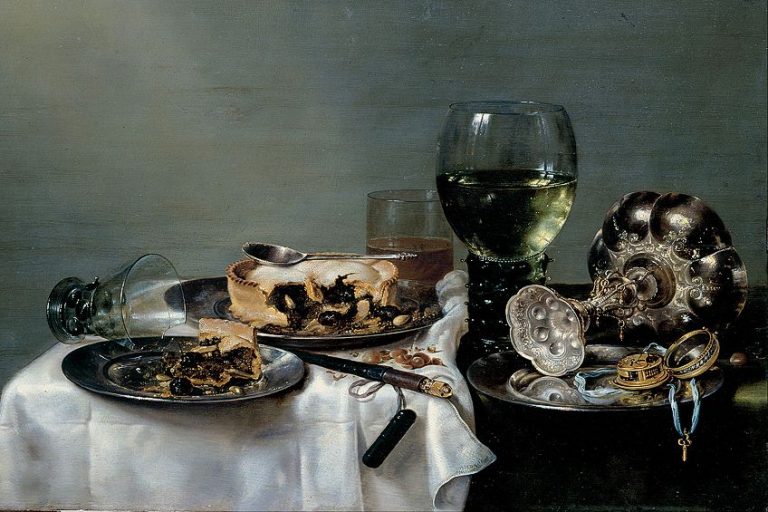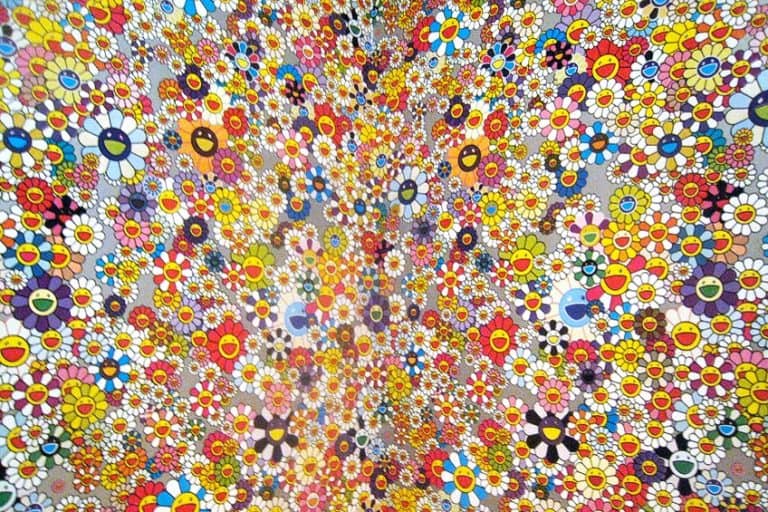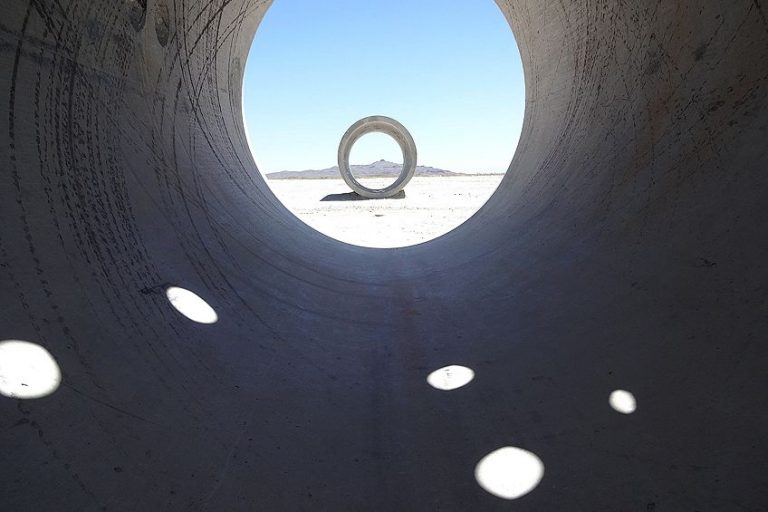Orphism Art – An Introduction to the Orphic Cubism Movement
The Orphism art movement, often referred to as “Orphic Cubism,” stands as a captivating and enigmatic chapter in the annals of modern art history. Emerging in the early 20th century, the Orphism art movement was a distinctive avant-garde style that sought to unravel the boundaries of perception and reality through a harmonious interplay of color, form, and abstraction. The Orphism art movement aimed to transcend the confines of the visible world. In this exploration of the Orphism art movement, we delve into the origins, principles, and legacy of this captivating artistic philosophy, which continues to inspire and captivate audiences to this day.
Unveiling the Luminous Tapestry of Orphism Art: A Symphony of Color and Abstraction
In the kaleidoscopic panorama of modern art, there exists a mesmerizing and lesser-explored realm known as Orphism Art—a movement that harmoniously marries color, form, and abstraction to create a visual symphony that dances on the canvas. Rooted in both artistic innovation and philosophical exploration, Orphism Art stands as a testament to the human desire to transcend the mundane and connect with the ineffable. As we embark on a journey of discovery into the vibrant realm of Orphism, we shall unravel its origins, delve into its socio-political context, and contemplate the profound philosophy that underscores its radiant tapestries.

Origins and Evolution
The Orphism art movement found its genesis in the early 20th century, amid the tumultuous aftermath of World War I. Emerging as a radiant offshoot of the Cubist movement, Orphism Art derived its name from the mythical poet-musician Orpheus—a figure of ancient Greek lore renowned for his melodious allure and ability to traverse the realms of the living and the dead. Spearheaded by artists Robert Delaunay and Sonia Delaunay, Orphism sought to distill the essence of reality into a symphony of geometric shapes, vibrant hues, and rhythmic patterns.
Breaking away from the monochromatic palette of traditional Cubism, Orphism ushered in an era of exuberant color and dynamic composition, inviting viewers to embrace a visual experience that transcended mere representation.
Context and Contours: Socio-Political Landscape
As Orphism Art unfurled its radiant wings, it did so against a backdrop of socio-political change and cultural upheaval. The aftermath of World War I left societies grappling with shattered norms and disillusionment. In this context, Orphism offered a poignant escape—a realm where color and form danced together, inviting individuals to explore the profound depths of their own consciousness. Moreover, the movement’s emphasis on abstraction and transcendence can be seen as a response to the turbulence of the era, a reflection of the human yearning to rise above the chaos and rekindle a sense of spiritual connection.

The Philosophy of Perception and Spirituality
Beyond its captivating aesthetics, Orphism Art is underpinned by a profound philosophical current—one that seeks to unveil the hidden dimensions of existence and offer a glimpse into the spiritual. At the heart of Orphism’s artistic expression lay a profound philosophy—one that resonated with the spirit of its mythological namesake. Much like Orpheus himself, who ventured into the realm of the underworld to reclaim his beloved Eurydice, Orphism artists embarked on a metaphysical quest to uncover the mysteries beneath the surface of reality.
Orphism philosophy was deeply rooted in the exploration of perception, spirituality, and the unseen dimensions of existence.
Artists sought to capture the essence of the intangible, weaving a visual narrative that extended beyond the confines of the physical world. This philosophy found its voice in the interplay of color, where vibrant hues were meticulously orchestrated to evoke emotional resonance and spiritual transcendence. Orphism philosophy influenced the very fabric of the movement, shaping its distinctive visual language and infusing it with a sense of enchantment and wonder.
Enduring Reverberations
Over time, the Orphism art movement evolved and resonated with various artistic currents. Its vibrant palette and geometric compositions inspired subsequent movements, including Op Art and Abstract Expressionism, and even in contemporary digital art, which harnesses the interplay of light and color to mesmerize and captivate. As the world hurtled through decades of change, Orphism’s legacy endured, captivating artists who sought to engage with its unique interplay of color and form. The movement’s influence also extended beyond the canvas, permeating design, fashion, and even theater, further solidifying its place in the annals of art history.

The Kaleidoscope of Vision: Exploring the Technical Charms of Orphism Art
In the realm of artistic innovation, where color, form, and abstraction intertwine to create a symphony for the senses, Orphism Art emerges as a mesmerizing tapestry of visual delight. Beyond its philosophical underpinnings and historical context, the movement boasts a distinct set of technical characteristics that set it apart as a radiant jewel in the crown of modern art.
From the masterful manipulation of color to the dynamic interplay of geometric shapes, the technical allure of Orphism captivates the eye and engages the mind in a dance of perception and possibility.
A Symphony of Color
At the heart of Orphism lies an audacious celebration of color—an exuberant departure from the monochromatic palettes of its artistic predecessors. Artists of the movement wielded color as a potent instrument to evoke emotion, create rhythm, and challenge the boundaries of perception. Vivid hues were juxtaposed in unexpected combinations, giving rise to a harmonious cacophony that defied traditional notions of realism. The deliberate use of contrasting colors, often devoid of direct reference to the physical world, created an optical kaleidoscope that entranced the viewer and invited them to explore the spectrum of human experience.

Geometry in Motion
Central to the technical prowess of Orphism Art is the artful manipulation of geometric forms. Artists like Robert Delaunay and Sonia Delaunay embraced the fragmented and deconstructed approach of Cubism, yet they breathed new life into it by infusing their compositions with a sense of dynamic movement. Geometric shapes were meticulously arranged and interwoven, creating a visual choreography that drew the eye across the canvas.
These arrangements imbued the artworks with a rhythmic quality, akin to musical notes dancing across a score, and blurred the boundaries between the tangible and the abstract.
The Play of Light and Space
In the realm of Orphism, light, and space become dynamic participants in the artistic dialogue. Artists skillfully manipulated light and shadow to create illusions of depth, inviting viewers to traverse an otherworldly terrain where dimensions shifted and merged. Through the artful placement of colors and forms, Orphism artists crafted compositions that appeared to pulsate with energy and vibrate with a sense of vitality. This interplay between light and space added a multi-dimensional dimension to the artworks, rendering them as portals to alternate realms of perception.
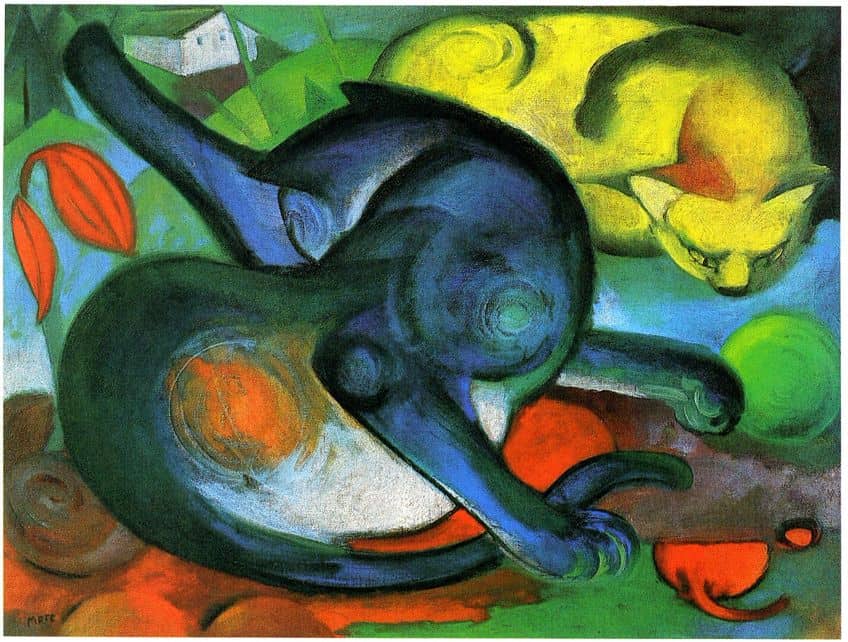
Transcending the Two-Dimensional
Orphism Art deftly transcended the traditional confines of the two-dimensional canvas, inviting viewers to engage with a sense of spatial ambiguity. Artists embraced the concept of simultaneity—the idea that multiple perspectives and moments could coexist within a single composition.
By layering and overlapping forms, Orphism created a sense of temporal fluidity, capturing the fleeting nature of human experience and inviting contemplation of the interconnectedness of all things.
Exploring the Luminous Realm: Orphism Artists and Their Radiant Creations
As we delve into the enchanting world of Orphism, we embark on a journey to unveil the visionary artists who brought this movement to life and their luminous creations that continue to dazzle and inspire. From the rhythmic orchestrations of Robert Delaunay to the vibrant tapestries woven by Sonia Delaunay and their artistic peers, we shall explore the brilliant minds behind Orphism and the resplendent works that define this captivating chapter in the evolution of modern art.
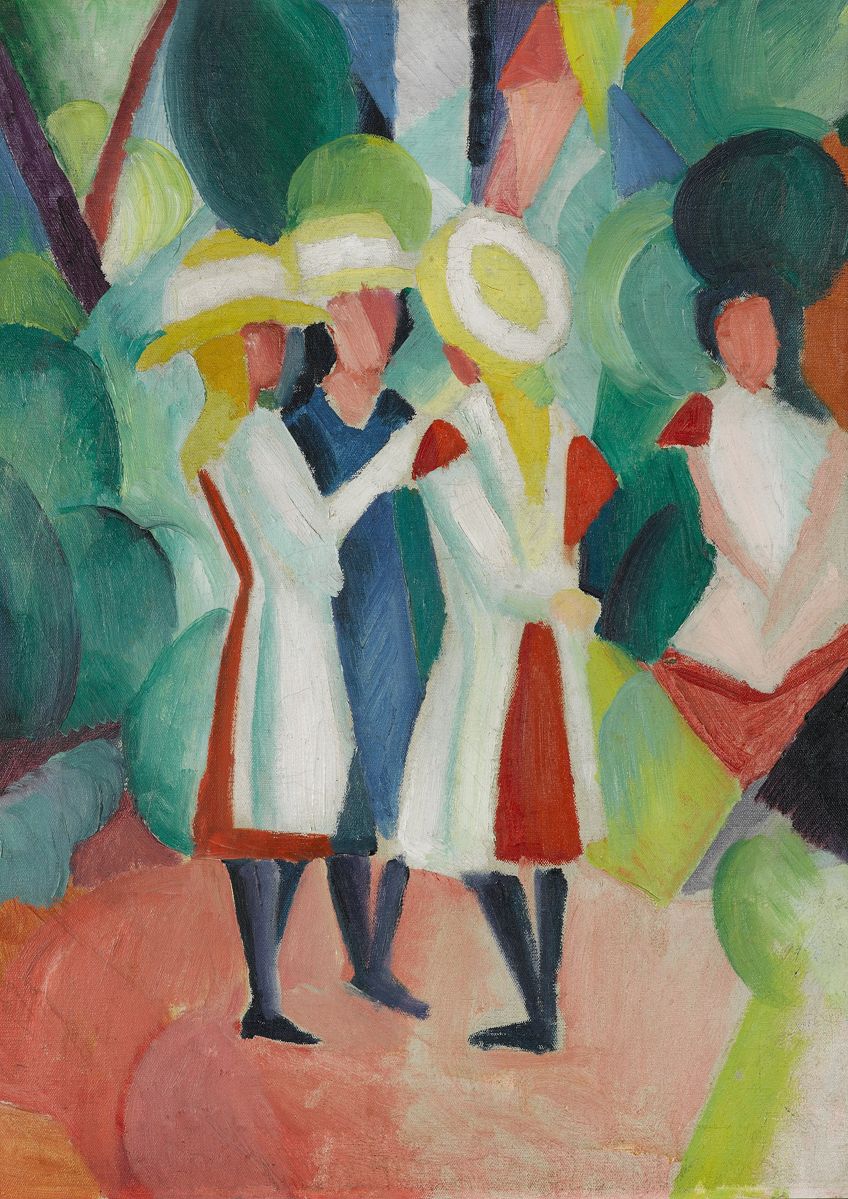
Artist Abstract: Robert Delaunay’s Vibrant Artistry
| Date of Birth | 12 April 1885 |
| Date of Death | 25 October 1941 |
| Place of Birth | Paris, France |
| Nationality | French |
| Associated Art Movements | Cubism, Modern art, Orphism, Neo-Impressionism, Divisionism, and Abstract art |
Robert Delaunay, a luminary of the avant-garde, is celebrated for his pioneering role in shaping the Orphism art movement. A masterful orchestrator of color and form, Delaunay’s canvases pulse with vibrant energy, captivating the eye and the imagination.
Through his revolutionary use of color harmonies and geometric compositions, Delaunay pushed the boundaries of artistic expression, creating dynamic visual symphonies that transcend the ordinary.
His innovative approach to abstraction, often referred to as “Simultanism,” is a testament to his unique ability to capture the dynamic interplay of light, space, and emotion. As a trailblazer of modern art, Delaunay’s legacy resonates as a testament to his unwavering commitment to exploring the boundaries of perception and creating a bridge between the tangible and the spiritual through the radiant tapestries of his artistic vision.
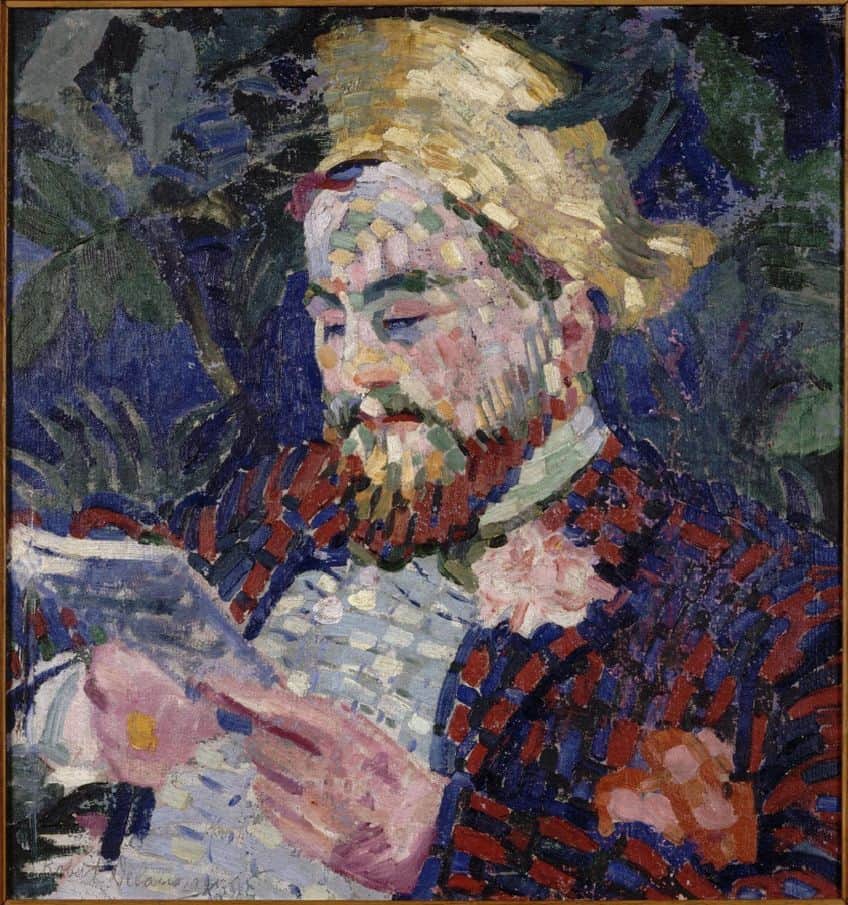
Visual Analysis of Rhythm (1930)
| Title | Rhythm |
| Date | 1930 |
| Medium | Oil on canvas |
| Dimensions (cm) | 200 x 228 |
| Location | National Museum of Modern Art, Paris, France |
Rhythm (1930) by Robert Delaunay is a visual symphony that dances on the canvas with an enchanting interplay of color, form, and movement. Delaunay’s mastery is evident in the way he harnesses bold geometric shapes and vivid hues to create a sense of rhythmic harmony that resonates with the viewer.
The composition seems to pulse with dynamic energy, as concentric circles and vibrant arcs intersect and overlap, creating a mesmerizing sense of depth and dimension.
The intense blues, vibrant reds, and luminous yellows converge to evoke an emotional response, immersing the viewer in a sensory experience that mirrors the cadence of music. Rhythm is not merely a static image; it is a dynamic visual manifestation of the ebb and flow of life, inviting contemplation of the interconnectedness of all things and the vibrant pulse that courses through the fabric of existence.

Artist Abstract: Sonia Delaunay’s Kaleidoscopic Artistry
| Date of Birth | 13 November 1885 |
| Date of Death | 5 December 1979 |
| Place of Birth | Hradyz’k, Ukraine |
| Nationality | Ukrainian |
| Associated Art Movements | Modern Art and Orphism |
Sonia Delaunay, a pioneering force in the world of modern art, stands as a testament to boundless creativity and revolutionary spirit.
A maven of color, form, and abstraction, Delaunay’s artistic journey traversed the realms of painting, textile design, and beyond, leaving an indelible mark on the canvas of 20th-century art.
With an unbridled passion for experimentation and a profound understanding of the interplay between shape and hue, Delaunay’s work transcended conventional artistic boundaries, weaving a symphony of visual delight that continues to captivate and inspire. As an avant-garde luminary, her legacy radiates as a beacon of artistic innovation, inviting viewers into a mesmerizing world of harmonious chaos, rhythm, and dynamic exploration.
Visual Analysis of Electric Prisms (1913)
| Title | Electric Prisms |
| Date | 1913 |
| Medium | Oil on canvas |
| Dimensions (cm) | 56 × 47 |
| Location | Georges Pompidou Center, Paris, France |
In Sonia Delaunay’s captivating masterpiece Electric Prisms (1913), the canvas comes alive with a symphony of vibrant colors and dynamic geometric forms that dance in harmonious chaos. Delaunay’s ingenious use of color creates an electrifying visual experience, as bold, contrasting hues collide and intersect, infusing the composition with an almost palpable sense of energy. The interplay of triangular shapes, skillfully arranged to create a sense of movement and depth, draws the viewer into a kaleidoscopic vortex of visual rhythm. This dazzling arrangement of shapes and colors evokes the sensation of prismatic light refracted through a crystal as if the canvas itself were a portal to a realm where the boundaries of reality are transformed. Electric Prisms stands as a testament to Delaunay’s mastery of abstraction and her ability to translate complex visual sensations into a captivating visual language that ignites the imagination and invites contemplation.
In the tapestry of artistic evolution, the Orphism art movement, also known as Orphic Cubism, emerges as a radiant constellation that has left an indelible mark on the canvas of modern art. With its balanced dance of color, shape, and dreaminess, the movement transcends mere representation, inviting viewers to explore the depths of perception and the realms of the unseen. Rooted in the Orphism philosophy that seeks to unravel the mysteries beneath the surface of reality, Orphism artists have woven a mesmerizing narrative that continues to captivate and inspire. Through their luminous creations, the Orphism art movement has illuminated the path toward a deeper understanding of the profound connection between the tangible and the transcendent, echoing the timeless melodies of the mythological Orpheus himself.
Frequently Asked Questions
What Are the Main Elements of Orphism?
At its core, Orphism is characterized by a dynamic interplay of vibrant color, geometric abstraction, and a quest to transcend the boundaries of the visible world. The movement’s main elements include the innovative use of color harmonies to evoke emotional and spiritual resonance, the manipulation of geometric shapes to create rhythmic compositions that transcend the two-dimensional plane, and a philosophical undercurrent that seeks to unveil the hidden dimensions of existence. These elements converge to create a unique visual language that invites viewers to journey beyond the surface and explore the profound interplay between perception, spirituality, and the mysteries that lie beneath the realm of ordinary reality.
What Is the Difference Between Cubism and Orphism?
Cubism and Orphism share a common lineage in the realm of modern art, yet they diverge in distinct ways. While both movements embrace abstraction and the deconstruction of forms, Cubism predominantly focuses on the fragmentation and multi-perspective representation of objects, often resulting in intricate and angular compositions. In contrast, Orphism, often referred to as Orphic Cubism, places a heightened emphasis on the orchestration of vibrant colors and rhythmic geometric forms to evoke a sense of transcendence and emotional resonance. While Cubism seeks to dissect and reimagine the visual world through analytical lenses, Orphism delves into the realms of spiritual and emotional perception, inviting viewers to engage with a harmonious interplay of color and form that transcends the confines of traditional representation.
Who Were Sonia and Robert Delaunay?
Sonia and Robert Delaunay were visionary artists who played pivotal roles in shaping the landscape of modern art. As key figures of the Orphism art movement, they infused the art world with a burst of color and innovation. Sonia Delaunay was a master of color and abstraction, known for her groundbreaking work in textile design and her ability to infuse everyday life with artistic vibrancy. Her husband, Robert Delaunay, was a trailblazer who co-founded Orphism, orchestrating colors and geometric forms in a way that transcended traditional representation and delved into the spiritual realm. The Delaunays’ combined contributions not only enriched the artistic tapestry of their time, but also left an enduring legacy that continues to inspire and influence artists across generations.
What Is Orphism in Greek Mythology?
In Greek mythology, Orphism refers to a mystical and religious movement associated with the legendary figure Orpheus, a gifted musician, poet, and prophet. Rooted in ancient Greek beliefs, Orphism offered a distinct philosophical and spiritual perspective, focusing on the cyclical nature of life, death, and rebirth. Followers of Orphism believed in the immortality of the soul and practiced rituals and ceremonies to attain purification and divine favor. Orphic teachings emphasized the importance of moral conduct, asceticism, and the pursuit of inner enlightenment as a means to achieve harmony with the cosmos and achieve a better afterlife. The Orphic mysteries encompassed a rich tapestry of myths, symbols, and rituals, imparting a sense of transcendence and mystical insight to those who sought to unravel the deeper mysteries of existence.
Nicolene Burger is a South African multi-media artist, working primarily in oil paint and performance art. She received her BA (Visual Arts) from Stellenbosch University in 2017. In 2018, Burger showed in Masan, South Korea as part of the Rhizome Artist Residency. She was selected to take part in the 2019 ICA Live Art Workshop, receiving training from art experts all around the world. In 2019 Burger opened her first solo exhibition of paintings titled, Painted Mantras, at GUS Gallery and facilitated a group collaboration project titled, Take Flight, selected to be part of Infecting the City Live Art Festival. At the moment, Nicolene is completing a practice-based master’s degree in Theatre and Performance at the University of Cape Town.
In 2020, Nicolene created a series of ZOOM performances with Lumkile Mzayiya called, Evoked?. These performances led her to create exclusive performances from her home in 2021 to accommodate the mid-pandemic audience. She also started focusing more on the sustainability of creative practices in the last 3 years and now offers creative coaching sessions to artists of all kinds. By sharing what she has learned from a 10-year practice, Burger hopes to relay more directly the sense of vulnerability with which she makes art and the core belief to her practice: Art is an immensely important and powerful bridge of communication that can offer understanding, healing and connection.
Nicolene writes our blog posts on art history with an emphasis on renowned artists and contemporary art. She also writes in the field of art industry. Her extensive artistic background and her studies in Fine and Studio Arts contribute to her expertise in the field.
Learn more about Nicolene Burger and the Art in Context Team.
Cite this Article
Nicolene, Burger, “Orphism Art – An Introduction to the Orphic Cubism Movement.” Art in Context. September 5, 2023. URL: https://artincontext.org/orphism-art/
Burger, N. (2023, 5 September). Orphism Art – An Introduction to the Orphic Cubism Movement. Art in Context. https://artincontext.org/orphism-art/
Burger, Nicolene. “Orphism Art – An Introduction to the Orphic Cubism Movement.” Art in Context, September 5, 2023. https://artincontext.org/orphism-art/.


